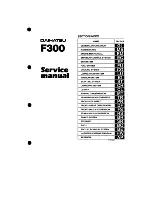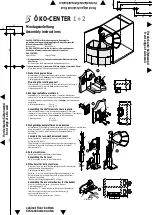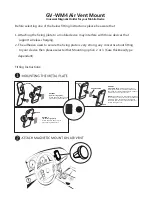
20
4445103620
Connection variant B (fig.
Connection variant for small motor homes, suitable
for all 12 V vehicles according to previous and
future standards, Euro 6+.
I
• The battery control booster is controlled via the
D+ signal of the alternator or the ignition lock
signal (terminal 15).
1. Slide the DIP switch (fig.
, page 3) to the
position “D+”.
2. Connect the D+ terminal to the alternator (D+)
or ignition lock signal (terminal 15).
3. To connect the battery control booster pro-
ceed as shown in fig.
Connection variant for small motor homes with a
cutoff relay present, suitable for all 12 V vehicles
according to previous and future standards,
Euro 6+.
I
• The battery control booster is controlled via the
D+ signal of the alternator or the ignition lock
signal (terminal 15).
• The cutoff relay is controlled via the TR terminal.
• If the house battery is discharged or connected
consumers draw a higher current than 10 A from
the house battery the cutoff relay remains closed
to enable charging currents higher than 10 A.
After falling below this current or with increasing
state of charge of the house battery, the cutoff
relay is opened and the battery control booster
takes over the charging process.
1. Slide the DIP switch (fig.
position “D+”.
2. Connect the D+ terminal to the alternator (D+)
or ignition lock signal (terminal 15) (
4
).
3. Connect the cutoff relay (
3
) to the TR terminal.
4. To connect the battery control booster pro-
Connection variant C2 (fig.
Connection variant for small motor homes with a
cutoff relay present,
not
suitable for vehicles
according to newer standards Euro 6+.
I
• The battery control booster is controlled via the
charging voltage at the starting battery.
• After starting the engine, the battery control
booster is activated when the voltage at the
starting battery increases. After switching off the
engine, the battery control booster is deacti-
vated when the voltage at the starting battery
decreases.
• The cutoff relay is controlled via the TR terminal.
• If the house battery is discharged or connected
consumers draw a higher current than 10 A from
the house battery the cutoff relay remains closed
to enable charging currents higher than 10 A.
After falling below this current or with increasing
state of charge of the house battery, the cutoff
relay is opened and the battery control booster
takes over the charging process.
1. Slide the DIP switch (fig.
position “V”.
2. Connect the cutoff relay (
3
) to the TR terminal.
NOTE
• This variant is unsuitable if connected
consumers draw a higher current than
10 A, as the house battery can be dis-
charged. In this case, use connection
variant C1.
• If the battery control booster is acti-
vated via terminal 15, the starting bat-
tery can be discharged when the
ignition is switched on and the engine
is not running. Use a D+ Active simula-
tor if no D+ signal is available.
NOTE
• Use the load relay (NC 12 V, 80 A) with
installation cable set if no cutoff relay is
present.
• If the battery control booster is acti-
vated via terminal 15, the starting bat-
tery can be discharged when the
ignition is switched on and the engine
is not running. Use a D+ Active simula-
tor if no D+ signal is available.
NOTE
Use the load relay (NC 12 V, 80 A) with
installation cable set if no cutoff relay is
present.
















































